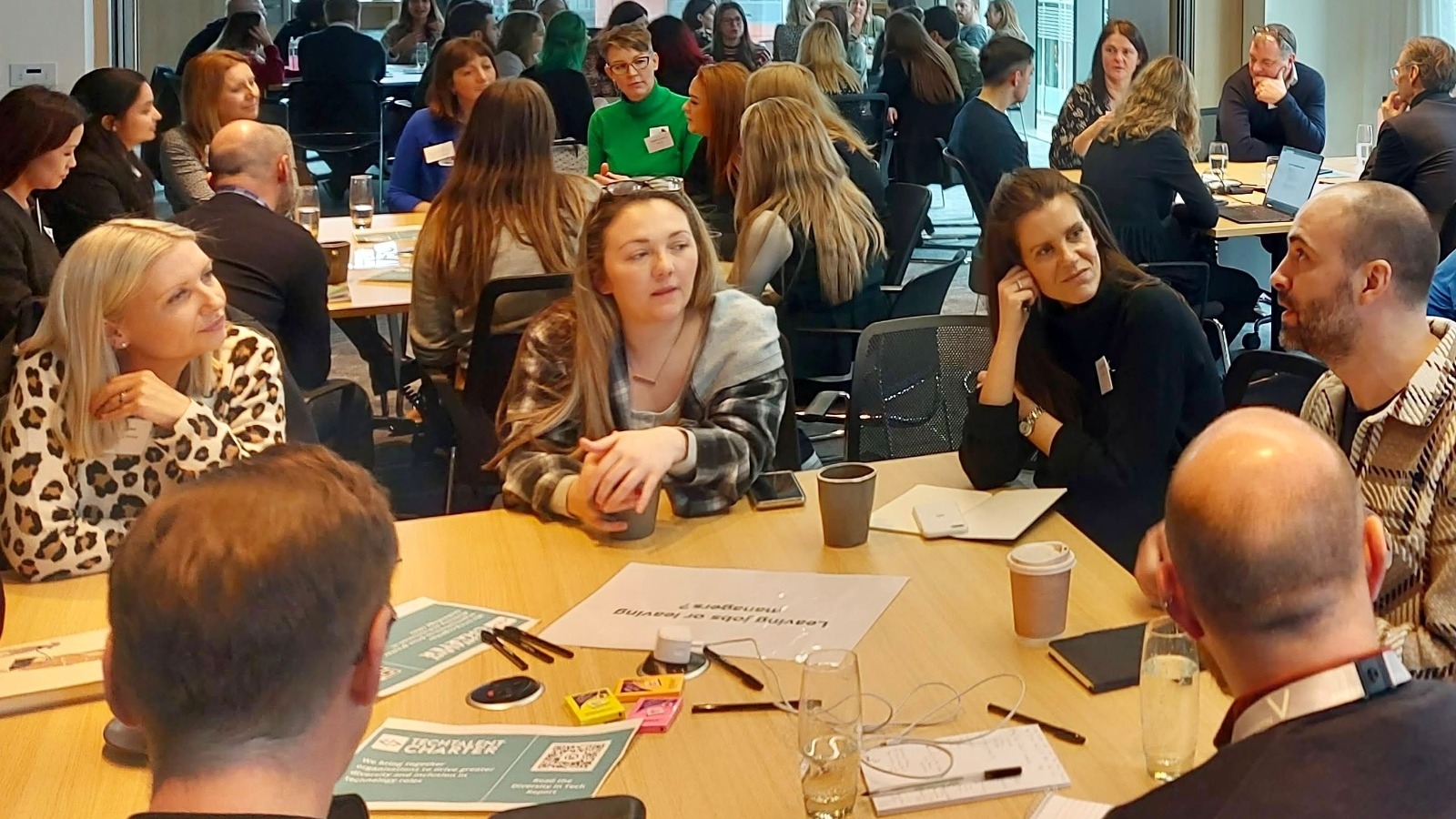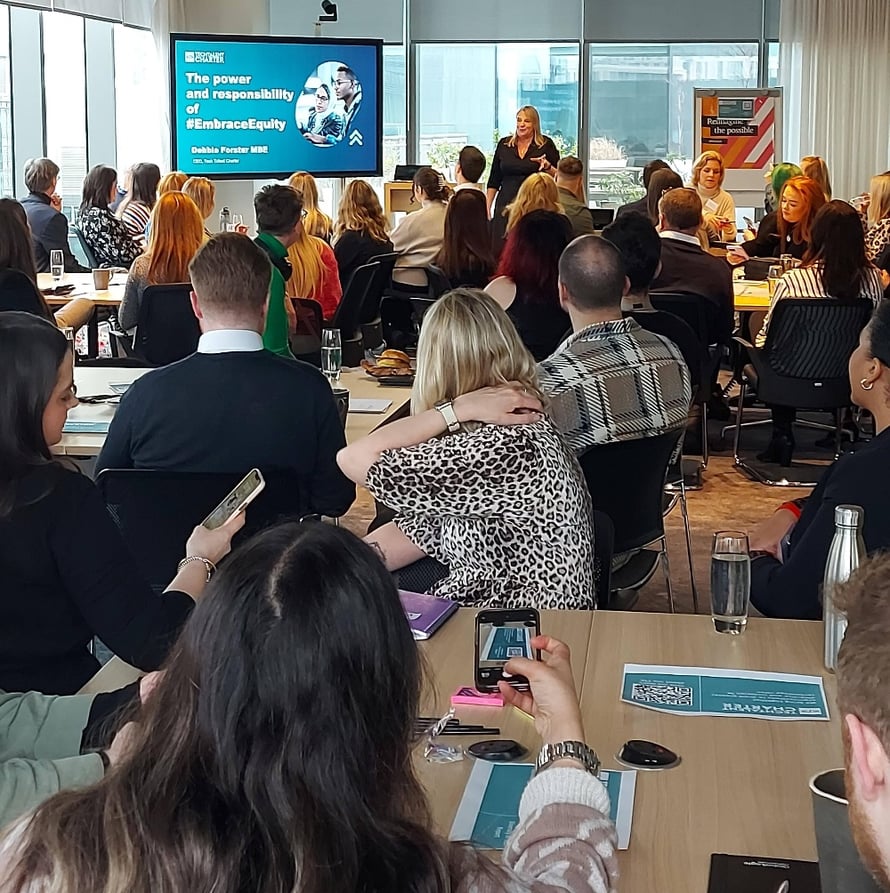Improving diversity in senior tech roles

What we learned about diversity in senior roles when we put 60 business leaders together in Manchester
The tech industry has long been criticised for its lack of diversity. Reports show that women account for only around one in four tech role holders. At Tech Talent Charter, we work with our 750+ Signatories to improve diversity and inclusion (D&I) in tech. But even amongst the organisations who are investing in D&I, there is a particularly difficult battleground that continues to present ongoing challenges: diversity in mid-level, senior and leadership roles.
With mandatory gender pay gap reporting, many organisations have been faced with the stark reality of numbers, that when it comes to positions of influence and high reward the picture is still very heavily skewed towards certain groups.
TTC analysed diversity in senior tech roles in our latest Diversity in Tech report, and found that gender diversity in senior positions drops by 6 points compared to the overall tech workforce, whilst ethnic diversity almost halves.
Having the data on this problem is only the first step towards change. So TTC took our report on the road, convening regional tech and business leaders to learn from each other on ways to tackle this collective problem together. We asked them to share what they were doing to improve diversity in senior roles. Here are three major areas of discussion that surfaced:
Get the whole company onboard for onboarding
Onboarding experiences are critical for setting new role-holders up for success, including those who are being promoted internally. Rather than looking at onboarding as synonymous with probation periods, we should instead reimagine it as ongoing support that starts as early as the offer stage and continues up as far as the first year in role, depending on the nature of the transition. Early-in-career hires and significant promotions may need longer onboarding than other role changes.
Onboarding also needs to sit within a wider framework of career pathways within an organisation. If companies expect to retain an individual for a significant portion of their career journey, they need to plan and communicate career pathways that are part of a lifelong learning approach. By celebrating diversity and creating an inclusive culture, organisations create a workplace where everyone feels supported to make a start, but also valued enough to want to stay.
Collaboration and creativity are key for SMEs
Achieving a lot more with a lot less is a constant balancing act for the SME leaders who participated in our roadshow. In seeking to improve D&I but with smaller networks, operations and budgets, we heard these leaders espouse the value of cultural agility, the ability to pilot change fast, and to be highly flexible to the needs of candidates and employees. Taking a person-centric approach to talent makes SMEs a great place to find a high-empathy culture that many workers seek.
SMEs tended to focus on ensuring inclusive practices were being put in place, but if doing it all in-house isn’t possible, companies can also get creative with their networks to crowd-source and share D&I resources and practices with their networks to deliver improvement together. For example, if your organisation is willing to mentor externally, offer an exchange mentoring program to a friendly business. Got a great resource on unconscious bias training? Share with another organisation who can lend you access to a text tool for neutralising bias in your job ads.
Shed old perceptions of tech skills programmes
Our Signatory participants spoke about the importance of new skill pathways that are less of a rigid ladder, and more of a creative web. Talent and skills need to be able to move more flexibly, laterally and at different cadences if we are to fully harness the talent of those who, for perfectly reasonable explanations, aren’t following the majority group career narrative. For example, returnships and reskilling opportunities in many cases completely meet the talent needs of organisations, but they are not being utilised toward this goal, and their benefits need to be more widely recognised. These approaches support not only internal employee engagement and retention but also external hiring.
Inclusive management and supportive leadership was named as essential for successful onboarding, but we also heard the need for supportive touchpoints outside of the management line. For example, it could be external mentor support as well as internal “near peer” contacts. Mentoring repeatedly emerged as a key part of good onboarding, to ensure that individuals feel connected to their new roles and the broader organisation.

So what now?
Having gotten the data from our Diversity in Tech report, and heard about the solutions being enacted by business and tech leaders at the coal face, organisations need to reflect on whether there are any learnings and actions they could take to improve inclusive pathways to progression. Whilst it’s down to individual companies to make these changes, the road doesn’t stop here. Everything we do at TTC is about companies working together and sharing learning. We believe that the last stage of every D&I improvement is sharing knowledge back to the community. So here are three things you can do that will help your D&I practice equal more than the sum of its parts:
- Share your learnings about what worked for your organisation in a Signatory Spotlight.
You can share the story with TTC on our website here. We work with you to turn them into mini case studies, and then add them to our Open Playbook so that your leadership can be part of another company’s learning journey. - Share our next roadshow event with your network.
We’ll be in Edinburgh on 16th May to explore yet more key issues like: how to stem attrition, how to retain diverse talent and how to start thinking about inclusion through a socio-economic lens. It’s thanks to the fantastic turnout of business leaders in the North West that we were able to run a packed and impactful roadshow in Manchester. Help us do the same in Scotland, by reaching as many people as possible who could inform the conversation and drive action in Edinburgh. - Share our Finally, we want to thank all who attended the Manchester roadshow and participated in this event.
We value every single one of our Signatories and the individuals in them who are helping to drive action. We always want to hear from you as to what you did with your learnings, so reach out and let us know what you did and how TTC can continue to support you as you drive D&I in tech.
